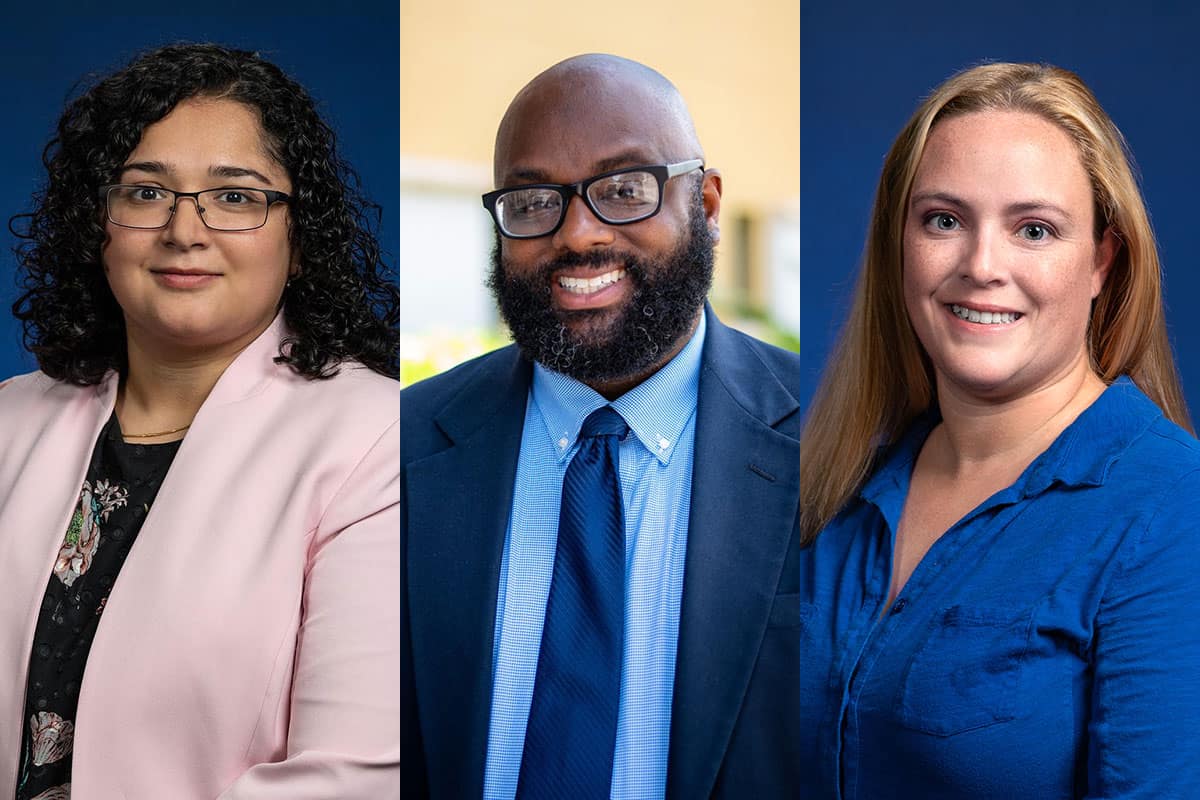New $1 Million NSF Grant to Help Embry-Riddle Develop STEM Leaders

Embry-Riddle Aeronautical University faculty member Dr. Foram Madiyar — with Dr. Ronnie Mack, director of Undergraduate Research, and Samantha R. Bowyer, associate professor of Aeronautical Science — recently won a nearly $1 million National Science Foundation (NSF) grant to launch an initiative called ASPIRE, the Aerospace Student-Teacher Program for Innovation, Research and Education.
The new NSF grant, which will serve high school students and their teachers, as well as undergraduate students, reflects Embry-Riddle’s ongoing effort to expand the future science, technology, engineering and mathematics (STEM) talent pool.
“The underlying goal of the ASPIRE program,” Mack explained, “is to broaden U.S. STEM workforce capacity and foster diversity across the aerospace industry by focusing on high school students, undergraduate students and teachers from underrepresented and low-income backgrounds.”
Over the next three years, the grant will engage 100 teens and undergraduate students, as well as 100 teachers annually, in experiential learning activities. Twenty percent of the students will have the chance to complete summer research internships. Undergraduate students will be co-trained with high school students, Madiyar said, while the same percentage of teachers will receive classroom supply grants.
Research projects will focus on timely aerospace-related topics.
“We’ll work on research questions, such as how aerospace advanced manufacturing methods can serve advanced air mobility and the best ways to integrate cutting-edge aviation technologies like uncrewed aircraft systems, electric aircraft and air transportation with automated air traffic management,” Madiyar reported. “Learning activities will include, for example, hands-on workshops on rocket launching, drone design and simulations, additive manufacturing and rigorous evaluation methods.”
The ASPIRE program is one of several related initiatives supported by major external grants secured by Madiyar, who joined Embry-Riddle in 2015 after serving as a research assistant at Kansas State University, where she earned her Ph.D. in chemistry, material science and nanotechnology.
Her Embry-Riddle collaborator on the ASPIRE program, Ronnie Mack, earned his Ed.D. from Nova Southeastern University and has 12 years of experience in higher education. In addition to his role as director of Undergraduate Research, he serves as an adjunct faculty member at Embry-Riddle.
Madiyar’s other major grant-funded programs include the Interdisciplinary Research Experiences for Undergraduates (REU) program at Embry-Riddle, supported by a nearly $434,000 National Science Foundation grant. The REU program serves exceptional undergraduate STEM talent nationwide.

Embry-Riddle students Rohan Joshi and Forrest Dohner (first and second from left) recently shared their research related to the synthesis of gold nanoparticles with K-12 summer camp participants in Dr. Foram Madiyar’s lab.
Detecting Micrometeorites, Thanks to NASA
Yet another new grant secured by Madiyar will provide high-level research opportunities for an estimated six undergraduate and two graduate students over the next two years. Provided by NASA, the $300,000 grant calls for research to help make space habitats safer.
Madiyar’s research objective is sure to get undergraduates excited about STEM.
She and her colleague Dr. Sirish Namilae, professor and program coordinator for Embry-Riddle’s Ph.D. in Aerospace Engineering program, hope to design a monitoring system using “self-healing sensors” to detect micrometeorites. The team will integrate innovative AI methods and monitoring techniques, including digital image correlation, with composites made of self-healing polymers to develop the micrometeorite monitoring system.
Why? Three inflatable space habitats — two in free-flying orbit and one attached to the International Space Station — are currently circling Earth, and someday, such structures may support human life on the moon and Mars.
Both naturally occurring micrometeoroids and orbital debris rocket through space at average speeds of 22,000 miles per hour, and “a one-centimeter paint fleck is capable of inflicting the same damage as a 550-pound object traveling 60 miles per hour on Earth,” NASA has reported. Smaller than a grain of sand, micrometeorite particles usually get vaporized before reaching Earth’s surface, but in space, NASA notes, “no blanket of atmosphere protects a spacecraft or a spacewalker.”
Foram envisions a monitoring and detection system based on sensors capable of repairing themselves, in the event of an impact by micrometeorites or space debris. As a first step in the project, undergraduate students will synthesize and characterize a “self-healing polymer,” or SHP. “We will explore different recipes and evaluate their chemical, healing and mechanical properties,” Foram explained.
Next, her team will design conductive microstructures for the sensors and fabricate nanocomposite materials that incorporate nanomaterials such as carbon nanotubes or fibers. In this way, Foram said, “We will be able to measure changes in resistance before, during and after healing of the polymer, in response to a mechanical strain or impact loading.”
Under the NASA grant, all students who are recruited to help design the space sensors will receive comprehensive training during a 10-week EagleSTEM Undergraduate Training Program that encompasses aerospace engineering, data analysis techniques and professional skills. One goal of the NASA grant is to provide STEM research opportunities for minority and underrepresented undergraduate students.
“Embry-Riddle has long been a leader in bringing new talent into the STEM pipeline,” Madiyar said. “I’m grateful to the NSF and NASA, as well as my Embry-Riddle colleagues, for making research opportunities more accessible to a broader range of students.”

 Ginger Pinholster
Ginger Pinholster